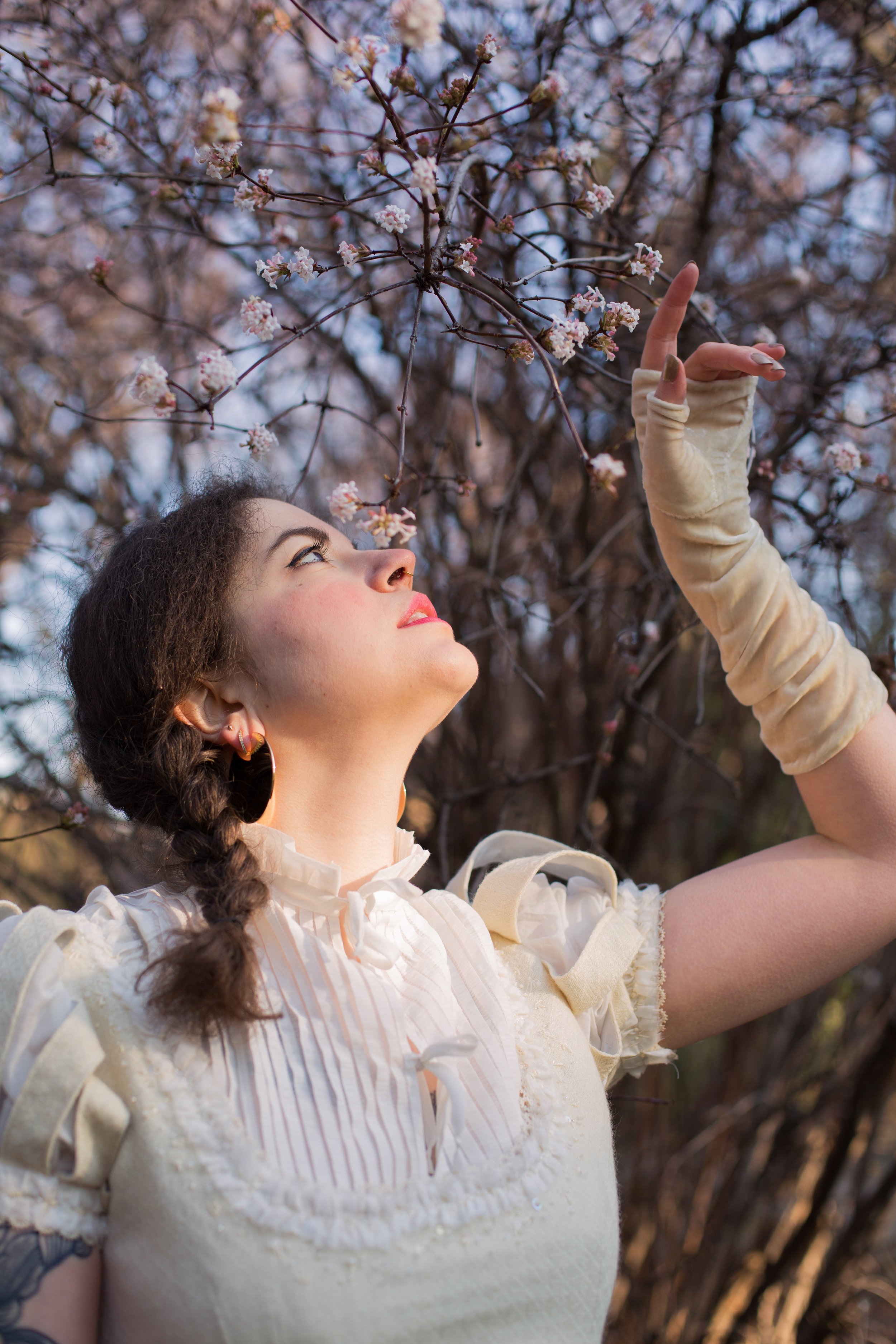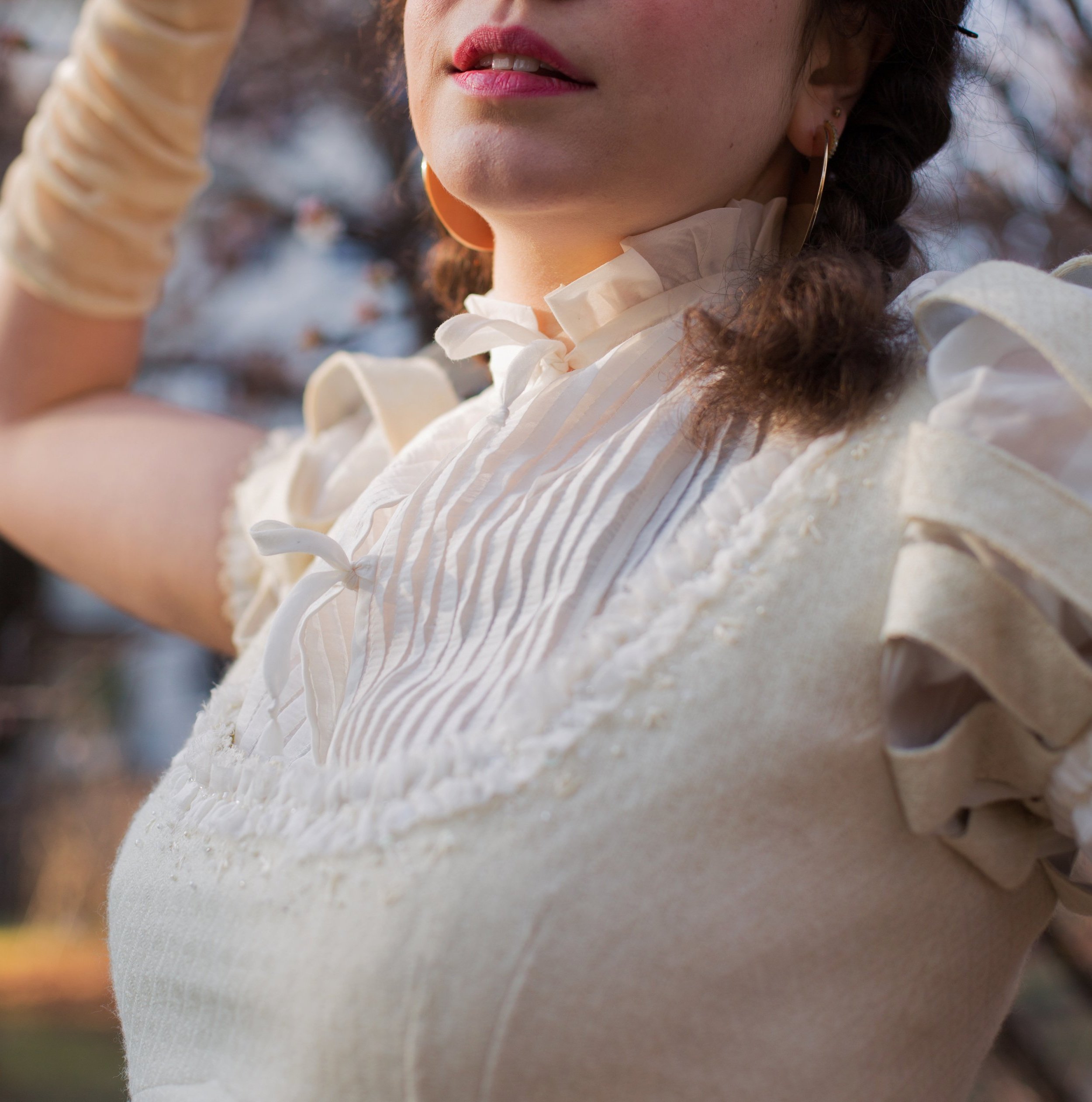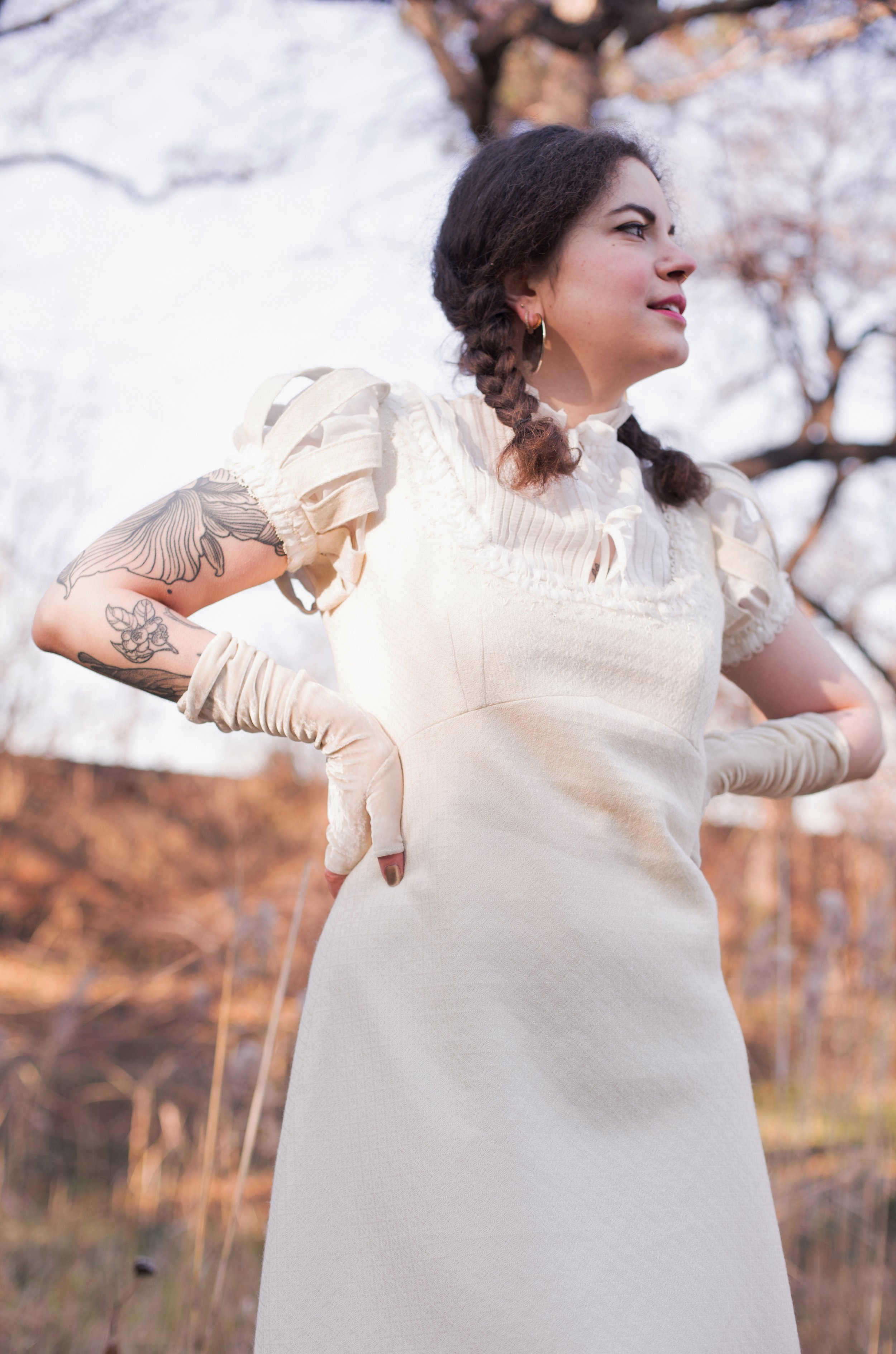imbolc
dressing for the seasons of the witch
I am back with the second instalment of my year-long project, The Seasons of the Witch. I wrote a bit more about the ‘why’ and ‘what’ of this project here, but the general idea is the following:
‘Personally, I have been drawn to witches for quite some time now. They intrigue and fascinate me and so I was wondering - how does ‘a witch’ look like for me? Whom do I associate with that word, how do I imagine the person behind it? What is my personal, typical witch - and what does she wear?’
This time, I am turning towards a youthful and curious incarnation of my personal witch, in order to celebrate Imbolc.
Imbolc marks the midpoint between the winter solstice and the spring equinox. It is the first lunar festival after the winter solstice - the days are getting longer, winter slowly fades into spring. It is a celebration of light and new life: The first spring flowers emerge, the first animals wake up from hibernation. The day honors fertility and is a reminder that the cycle of life cannot be broken, even by the cold of winter.
To emulate this energy of new life and youthfulness, I wanted something light and fresh. My Samhain witch was an all-embodying archetype, clad in dark and fiery colours, severe and powerful in her appearance. So for Imbolc, I tried to channel a fresh-faced, young and innocent witch: Someone full of curiosity for the new life that comes up at every corner, someone with childlike naivety, filled with wonder.
I decided to use shades of white as the main colours for the ensemble: It felt right for this feast of light and life, and it represents innocence and purity, as well as a new beginning. To accent the white and cream, I went with gold - it symbolizes the sun and its light and gives off a warm glow, which livens up the cleanness of the white.
Silhouette-wise, the main dress is also quite different from its predecessor: Instead of being cinched in and accentuating womanly curves, it has a sleek and slim silhouette. I was inspired by the debutante dresses of the early 19th century: A time when women’s clothes got seemingly more simple and natural and moved away from overly big dresses to something more fluid and ‘classic’ (= as in classically greek or roman).
Obviously, I did not recreate a historical dress (fabric choice, length and general pattern are all wrong), but I feel like this silhouette and the design elements really make for a certain kind of youthfulness and freshness, which was highly valued during the aforementioned period.
The dress is made out of a cream wool, with the skirt being cut on the bias. My favourite paret are probably the sleeves: Little paned puffy sleeves, equally ridiculous and adorable. I embellished the cuffs just like the neckline, with some antique lace, ruffled, glass beads and sequins.
I also made a little cropped blouse to go underneath the dress, with the front covered in pintucks. It has ruffles on the collar to echo the ruffle on the neckline of the dress, and closes with bows. To finish the ensemble, I made fingerless gloves out of a cream silk velvet.
Just like with the garments of the first instalment, future wearability of the pieces was important to me. Not 100% sure I succeeded with the dress, but the blouse will certainly get its fair share of wear.
all images © Lukas Jahn
location: Botanical Gardens Vienna
jewelry: Makaro, We Are Flowergirls, gifted items
overknees: Calzedonia
shoes: Berlin Clogs
The next witch will be coming on April 30/May 1.













